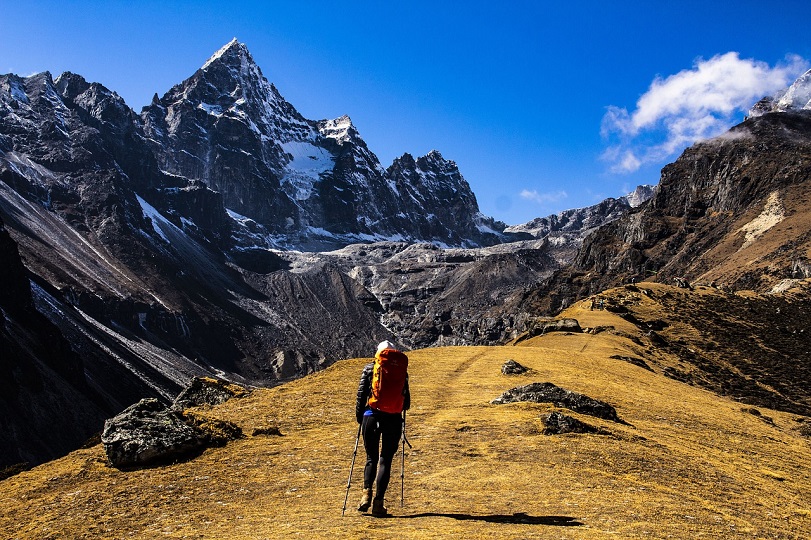Physical Address
304 North Cardinal St.
Dorchester Center, MA 02124
Physical Address
304 North Cardinal St.
Dorchester Center, MA 02124
Your guide to extraordinary adventures around the globe.
Your guide to extraordinary adventures around the globe.

With its towering snow-capped peaks, remote mountain villages, and welcoming culture, Nepal is a trekker’s paradise. As an avid backpacker who has completed numerous treks across the Himalayas, I’ve put together this beginner’s guide to help you plan an unforgettable Nepal trekking adventure.
Peak trekking season runs from October to November and March to May when skies tend to be clearest for mountain views. Temperatures are quite cold at higher elevations during these periods, often dipping below freezing at night. The spring season brings blooming rhododendrons while autumn has crystal clear skies after the monsoon rains have stopped.
Trekking during the monsoon from June to September can be a budget-friendly option, but expect frequent rainstorms that obscure views and muddy, slippery trails. The clouds swirling around the mountains can be striking though! I don’t recommend trekking in the dead of winter from December to February when extreme cold, heavy snowfall, and hazardous avalanche conditions close many mountain routes.
With so many spectacular treks across Nepal, choosing where to go can feel overwhelming for first-timers. Keep in mind your fitness level, availability, budget and sense of adventure when selecting a route. Here are some of the best beginner-friendly treks in Nepal:
Annapurna Circuit – One of Nepal’s classic and most popular routes, this stunning 150-200km loop circumnavigates the entire Annapurna Massif over 14-21 days. Cross Thorong La Pass (5416m) and experience tiny villages, world-class mountain scenery, diverse landscapes and cultures. Best from March to May and October to November.
Everest Base Camp/Three Passes – Trek to the foot of the world’s highest peak! Follow the traditional route to Everest Base Camp (5364m) from Lukla over 10-15 days, passing Buddhist monasteries, sherpa villages and incredible landscapes. Extend your trek to cross the high passes of Renjo La, Cho La and Kongma La. Prime season is October to November.
Langtang Valley – Ideal for those short on time, this moderate 6-7 day trek north of Kathmandu has fewer crowds and leads to the peaceful village of Kyanjin Gompa with stunning valley and peak views. Doable year-round.
Manaslu Circuit – A less crowded, pristine alternative to Annapurna, this challenging 15-18 day trek around Manaslu peaks (8163m) offers rich cultural immersion and incredible scenery as you cross Larkya La Pass (5213m). Best from April to May and October to November.
Ghorepani Poon Hill – Take in sunrise over the Himalayas on this short 5-7 day trek near Pokhara. Climb Poon Hill and visit Gurung villages on this scenic introduction to teahouse trekking, accessible year-round. Perfect for beginners.
You’ll need permits and paperwork to trek in Nepal’s national parks and protected areas. The permit process can seem daunting, but hiring an experienced local guide or tour operator allows them to handle all permits for you. Depending on your trek, you may need:
For first-time Nepal trekkers, I strongly recommend hiring a local guide to ensure you get the most out of the experience safely. Reputable guides:
That said, many teahouse treks like Ghorepani and Everest Base Camp can be done independently if you’re an experienced backpacker. I’d still suggest hiring a porter and guide (because Nepal banned solo trekking) locally to enrich the adventure. Keep in mind language barriers and safety risks if trekking solo.
With significant elevation gains and losses, Nepal’s mountain weather can be extremely cold, windy and unpredictable. Come properly equipped with:
Many items like packs, poles and sleeping bags can be rented affordably in Kathmandu to save luggage space. Take time to acclimate and rest when symptoms of altitude sickness arise. I’m happy to provide my Nepal packing checklist to anyone planning a trek!
Nepal’s teahouses offer simple but filling meals like dal bhat (rice, lentils, veggies), pasta, momos (dumplings), and porridge. Pack nutritious snacks too. Carry at least 3 liters of water, purifying stream water with filtration/UV treatments, iodine tablets or boiling. Wash hands frequently to avoid pathogens that cause gastrointestinal illness. Trekking poles and well-broken-in boots will help prevent joint injuries and blisters. Don’t attempt to summit peaks without proper ropes, crampons, ice axes and guidance.
Nepal’s mountains are sacred to locals, so respect the environment and culture. Follow Leave No Trace principles by packing out all trash, sticking to trails, and minimizing campsite impact. Dress and behave appropriately when visiting temples and interacting with locals. Hire local guides to boost the economy. Do not take photos without permission or purchase counterfeit gear. Help preserve Nepal’s stunning landscapes and heritage.
With mindful preparation, reasonable fitness, and a sense of adventure, novice trekkers can discover the trip of a lifetime in Nepal’s Himalayas. You’ll be awed by the sheer beauty of the world’s highest peaks and leave with new friendships, incredible photos, and memories to last a lifetime.